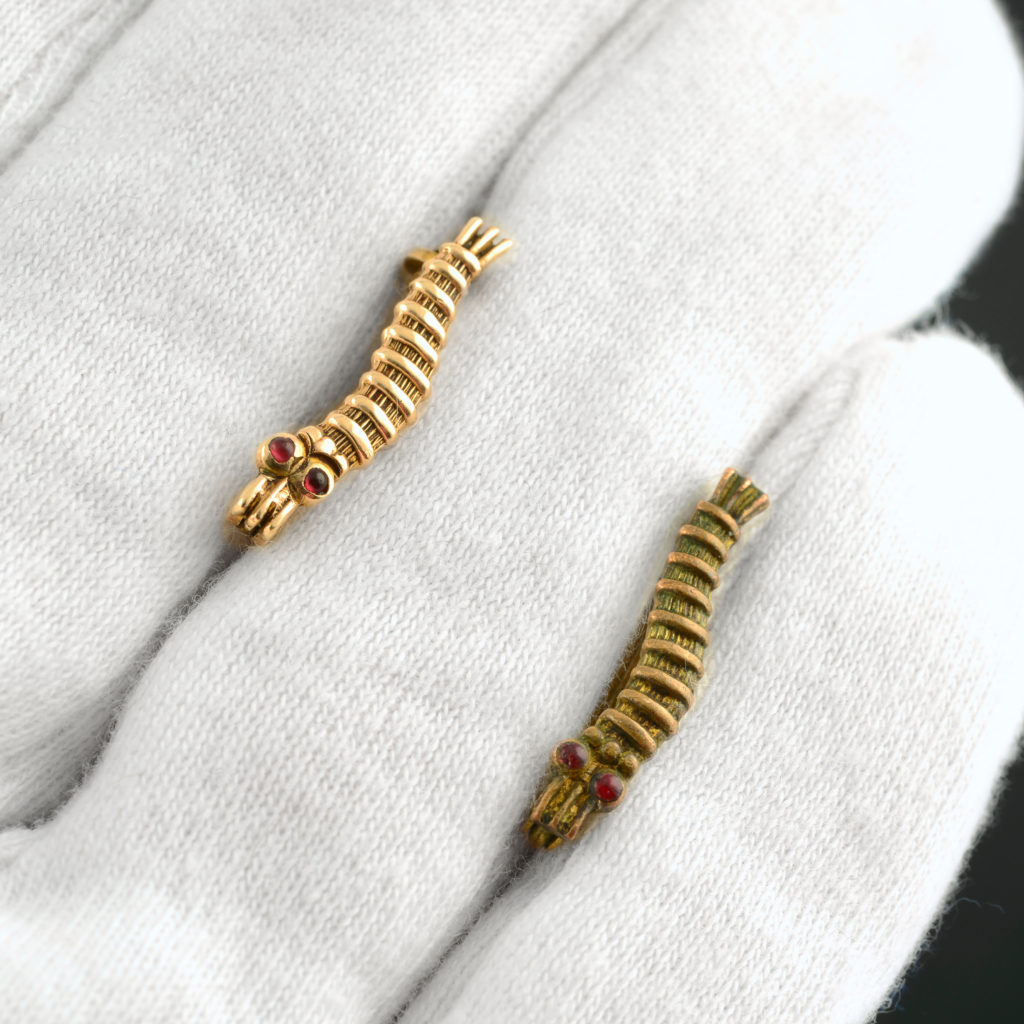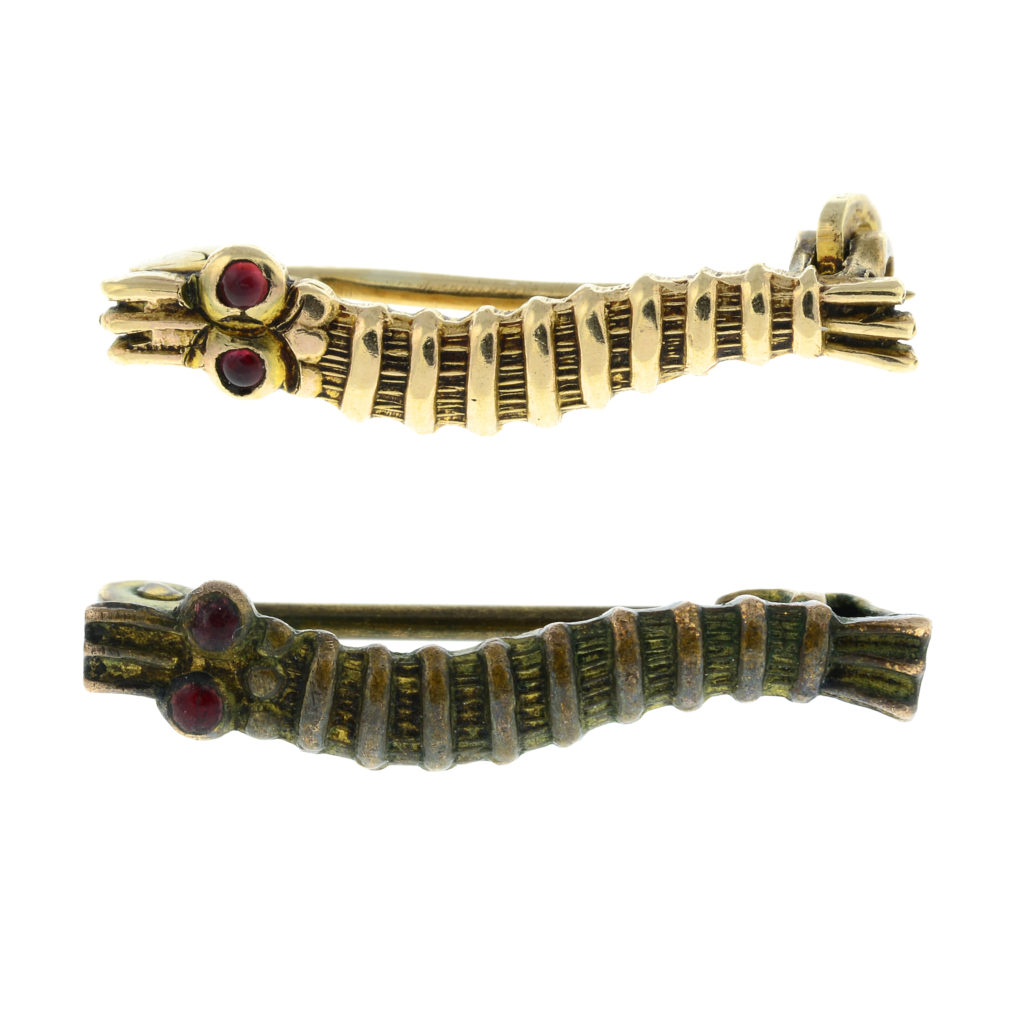
In the Monies, Medals and Militaria auction in May, we sold an extremely special lot. Lot 594 is a pair of Caterpillar Club brooches, which were awarded to the same person. These two Caterpillar Club badges are engraved with the name C. E. Stead, who we believe to be Charles Edward Stead.
In 1919, Charles Edward Stead was born in Nottingham. Before joining the RAF, he worked as a lorry driver. He married his wife Cora at age 21, and together they had one child. As with many people in the military – his career was marked with challenges and feats of heroism. The story of how he became a member of the club that no one wants to join is one of particular interest.
Becoming a Member of The Caterpillar Club
Stead was a member of the crew onboard the Lancaster JB121, on a mission to bomb Dusseldorf. The flight took off at 17:03 on the 3rd/4th of November 1943. At 19:00 they crossed the enemy coast, and by 19:13 the aircraft was attacked. While we have no first-hand account from Stead himself, the aircraft engineer, we do have one from Sgt Ronald Morley – the radio operator.
In his report, Morley states that as he was adjusting his radio, he felt a ‘tremendous explosion’, the plane shook and shrapnel broke through the floor. Another man onboard – the navigator, Sgt Kenneth Garvey - would recount that ‘balls of fire’ broke through the hull, lighting his clothes on fire and burning his hands. It was at this point that the aircraft’s pilot – Sqn/Ldr William James Lewis, orders his crew to jump. They jump from the plane which is now heading quickly towards the ground, and deploy their parachutes. Sadly, only four of the men onboard survived the attack.
Garvey and Morley were able to successfully escape. Although they were separated, their paths back to England were surprisingly similar. Both men were assisted by local people and managed to make their way home through the Pyrenees; Morley passed through the region on the 4th of December, and Garvey on the 21st. Both men returned to London in early January 1944. Their stories are marked by human companionship and empathy. If it was not for the local people in Spain and France who assisted them by burying their parachutes and uniforms, dressing them as civilians and giving them a bed, it is unlikely they would have survived.
Charles Edward Stead - Prisoner of War
Stead’s story is different, however. His is defined by the enduring nature of the human spirit. While he also successfully deployed his parachute – the act that earned him his place in the Caterpillar Club - he was captured by German forces. From then, he was taken as a prisoner of war, along with the co-pilot – John William Evans.
While he was a POW, he was interned at Stalag IV-B. It was one of the largest POW camps also known as Stammlager – ‘Main Camp’. This was the same camp where the American writer Kurt Vonnegut was kept as a prisoner of war. It inspired his later novel ‘Slaughterhouse-Five’. Stead remained there until the 23rd of April 1945. This was when the camp was liberated by the Red Army. The Nottingham Post published a segment on June 1st of the same year, reporting that Stead had arrived home from the camp. The report also tells that he received an Air Crew Europe Star Medal. He lived to the age of 67.
The crew of the Lancaster JB121 endured the unthinkable, and Stead’s story is particularly compelling. These Caterpillar Club pins are stunning examples of militaria, and the club’s motto; ‘life depends on a silken thread’, seems especially pertinent to the story of Charles Edward Stead and his fellow crew members.
Charles Edward Stead's Caterpillar Club Brooches at Auction

Lot 594 - 24/05/23
Two WWII 'Caterpillar Club' badges, engraved 'P/O. C E Stead', one gold. (2)
Price Realised: £2,795.00












